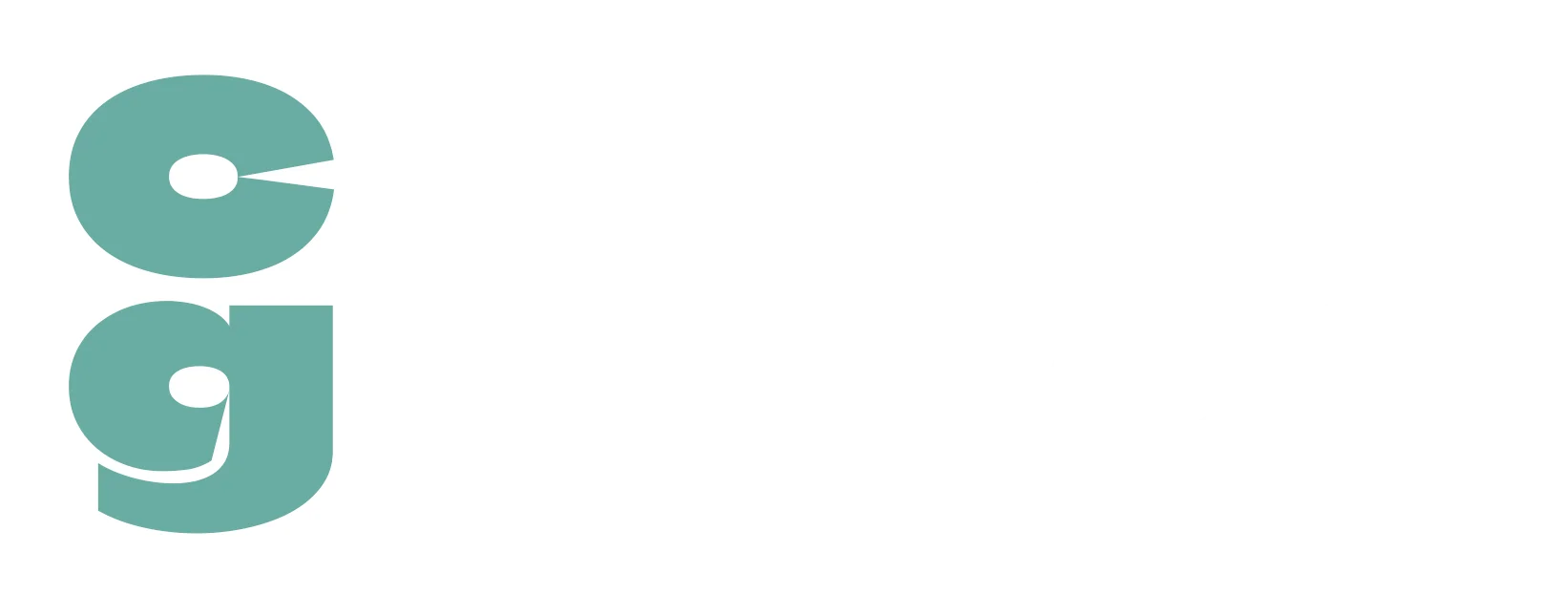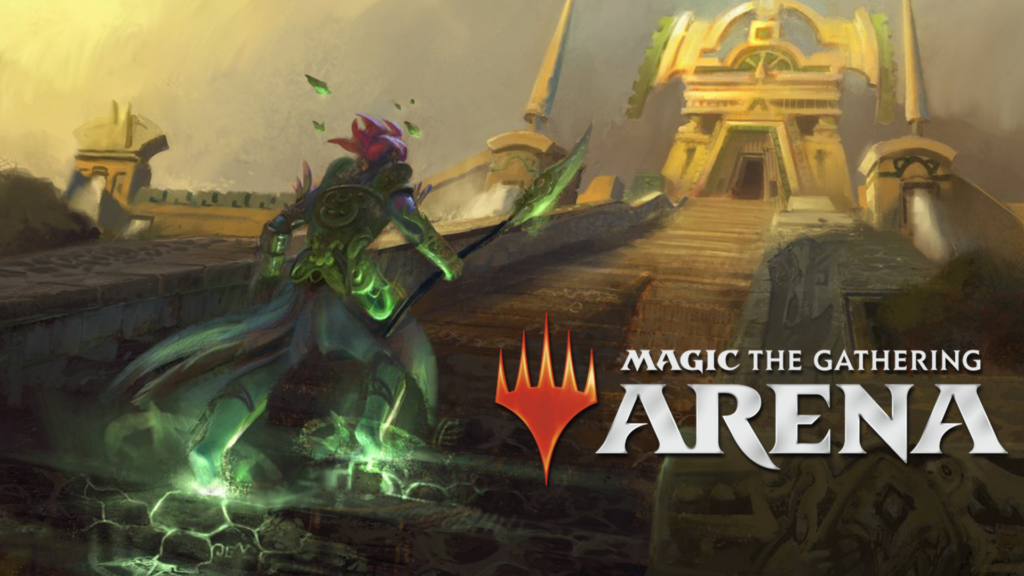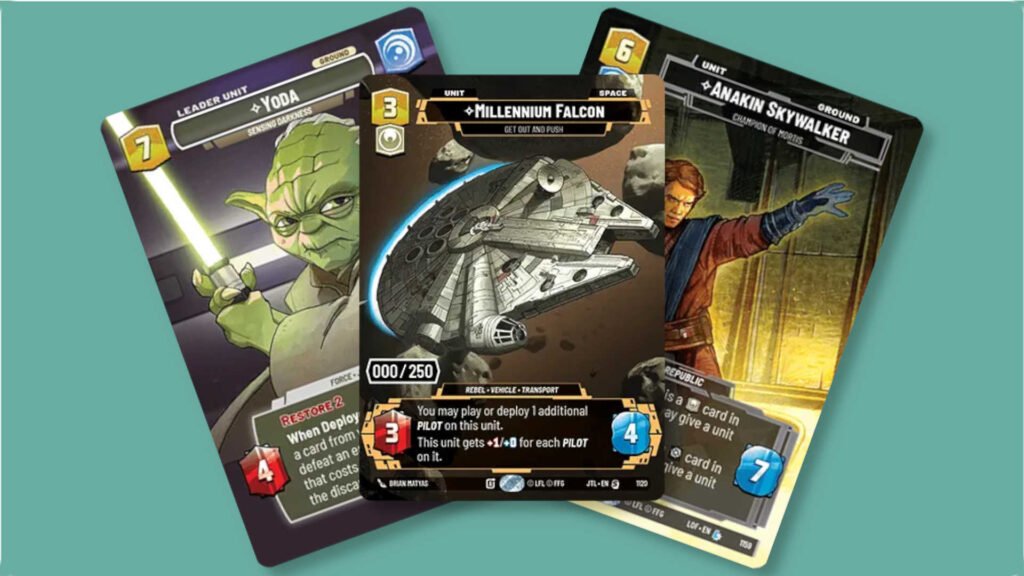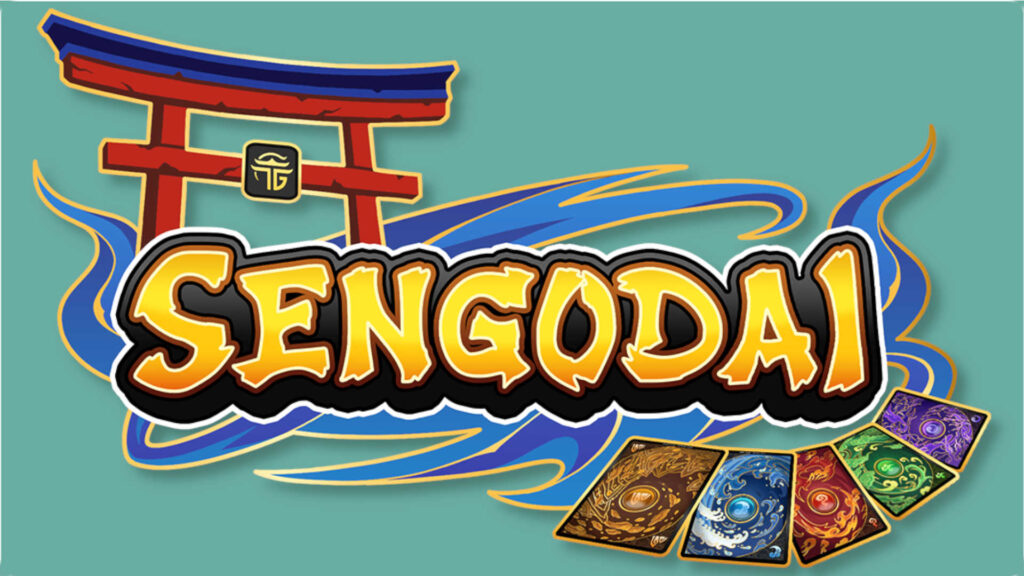Images courtesy of Wizards of the Coast
Here Are a Few Ways to Make Climbing the Ladder in MTG Arena a Bit Easier
While I’m far from a competitive Magic grinder and enjoy casual gaming more than tournaments, I do have a competitive itch I like to scratch occasionally, and play enough to do pretty well for myself in each season on MTG Arena.
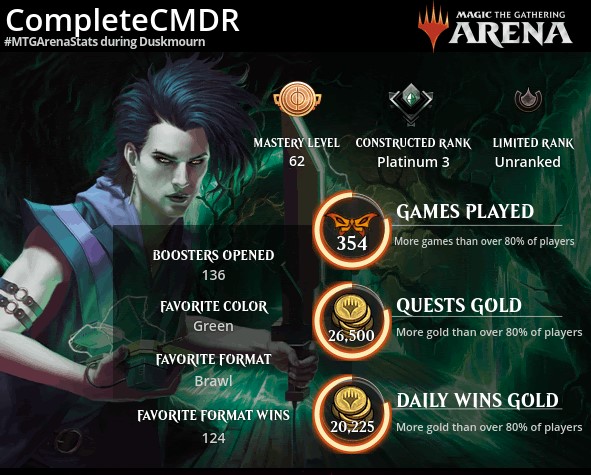
I play enough and do well enough to regularly hit a constructed rank in Platinum by the end of each season, so I can offer you some tips I use to climb that ladder. Here are five tips to get you started.
Table of Contents
Toggle1. Consider How Much Time You Have to Play
The first thing you need to consider is: how much time do you have to play competitive Arena? If your time is relatively limited with less than 30 minutes at a time, Best of One is a good choice. Games can go fairly fast, and once they’re over you can jump into another game, or log off and take care of other business.
The downside to Best of One is that it’s not a reflection of how Magic is played in real life tournament settings. So if you’re looking to practice for an upcoming tournament at your local game shop or perhaps a Magic Convention that’s nearby, Best of One may not be the best choice unless your online time is very, very limited.
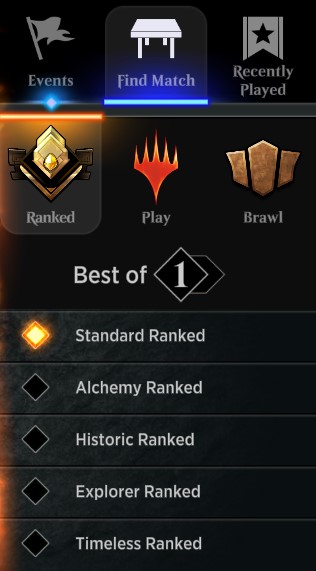
Best of One’s metagame is also quite a bit different than a tournament-style Best of Three metagame, where you have access to a 15-card sideboard you can swap cards in and out of for second and third games. This can lead to games where your deck is just not prepared for some of the decks you square off against, which can sometimes be frustrating.
Wizards of the Coast has been doing a good job in recent years designing Magic cards that are flexible in what they do, giving you something for playing it even if what it’s best at answering isn’t what you’re facing.
For instance, Feed the Swarm and Get Lost provide removal for multiple types of cards, while Cankerbloom provides an efficient 3/2 body that can attack or defend if you don’t have an enchantment or artifact to destroy. You can even sacrifice it to proliferate if you’ve got counters on permanents – or players – you want to crank up.
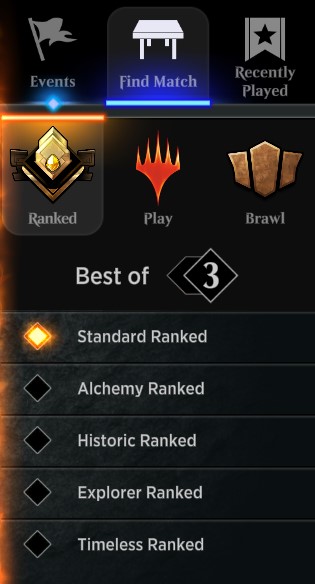
Best of Three offers up real, tournament-style Magic play that more closely reflects what you’ll see at your local game shop’s Friday Night Magic. You’ll get to play one or two games with sideboards which can give you options to target the popular deck strategies you might face over the matches. But it’s also a more serious time investment; three concurrent games of Magic can take nearly an hour to complete, and for your time you’ll get one win or one loss as compared to Best of One where you could have gotten three games in and have gotten up to three wins.
2. Start With Standard
Unless you’ve been playing long enough on Arena to have built up a wide collection of cards, I’d recommend starting with Standard. The card pool is smaller, and the metagame is easier to predict and follow. Wizards of the Coast has recently extended Standard rotation from two to three years, which means once you’ve got your Standard collection wide enough to build one or two decks, you can play with them for a longer time before they rotate out of the format.
If you’ve played for a while, or have invested in getting the older cards in Arena, you might look into building a competitive deck in Historic, Explorer, or Pioneer. Historic contains most all of the cards available on Arena, and includes the digital-only Alchemy cards. Since not everyone enjoys playing digital-only Magic cards that don’t have cardboard counterparts, Explorer and Pioneer offer a larger card pool tournament-style Magic experience analogous with cardboard formats.
3. Which of the Best Decks in the Format Appeal to You?
Okay, so you’ve chosen which format you want to play – for this example, we’ll go with Standard – so which deck should you play? Luckily there are plenty of options on the internet that list the hottest decks available. I like Untapped.gg, which has a lot of functionality for free, and you can pay a little extra to unlock additional premium features.
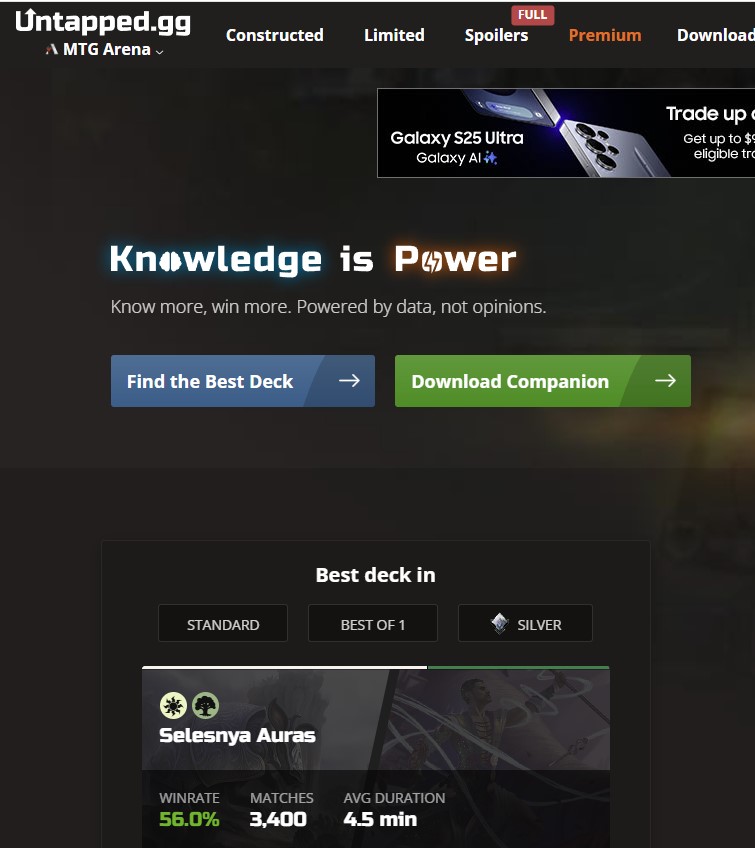
If you click on Download Companion, it’ll connect with your Arena account so it’ll know the cards in your collection and unlock more features of the website.
Click on Find the Best Deck, then you’ll go to another screen where you can click on the Decks tab, and then select the format you want to browse. For this example I picked Standard and Best of 1.
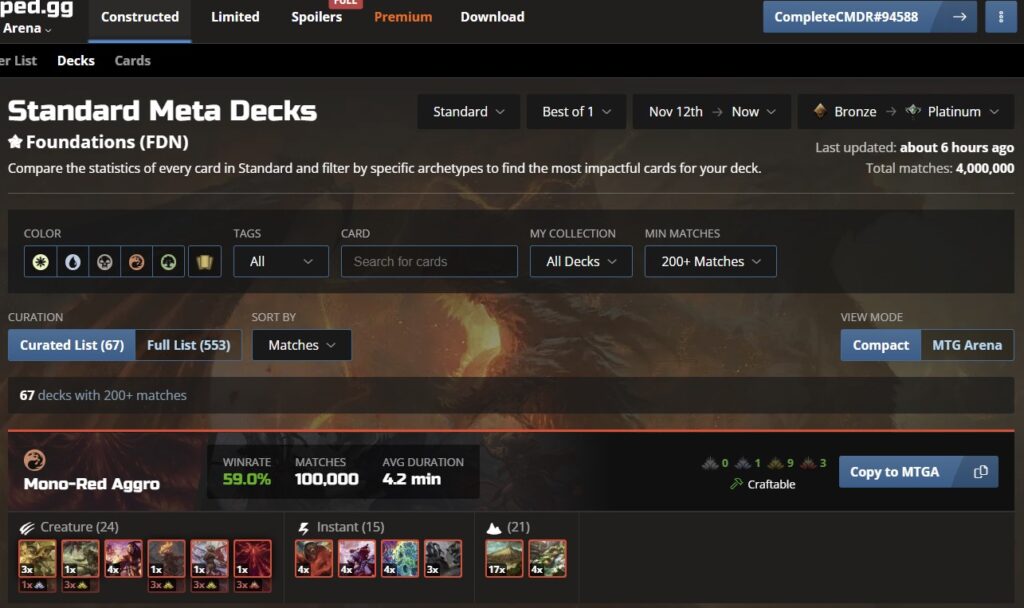
If you have a particular color or color you’re interested in you can click on the colors to filter the decks you see. Or if you’ve got a favorite card you really want to play with, you can search for it to see if it’s in a competitive deck.
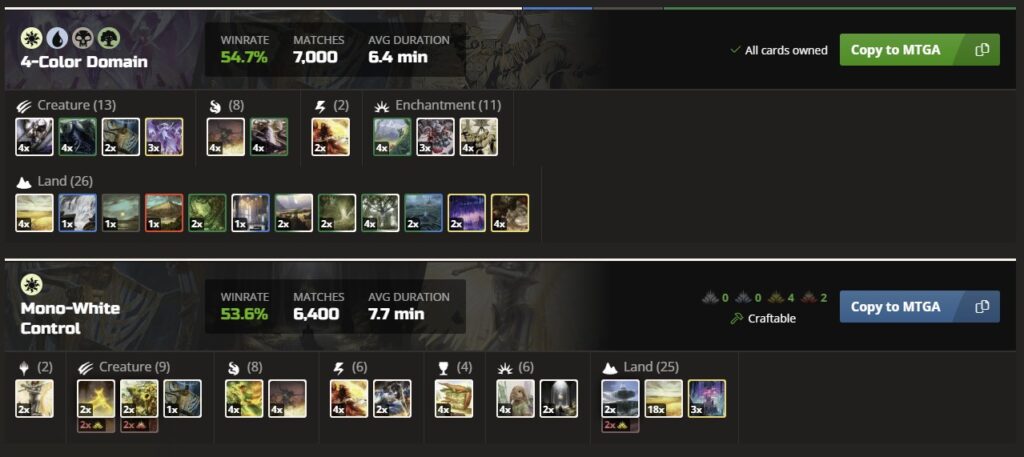
If you’ve downloaded the companion, this list will show you whether you own all the cards for the deck, or need some additional wildcards to finish the deck. In the picture above, you can see that I already have all the cards for 4-Color Domain – which doesn’t surprise me because I’ve been playing that deck in some variety for a while now. If I was interested in playing Mono-White Control, it shows that it’s “craftable,” which means I have most of the cards and I also have enough wildcards to finish the deck if I spend four rare and two mythic wildcards.
There are a lot of other options for finding decks. Just type “Magic Standard Decks” into Google and you’ll see them pop up. You can also find content creators who stream the Magic format you’re interested in, and they’ll often have a link to their decks if you see one that interests you. I’m a fan of PowrDragn on Youtube, who plays a lot of Standard Best of One.
Let’s say I was interested in the Grixis Delirium deck he had in a recent video.
In the comments of the video, he has a link to the deck on Moxfield. Once you’re there, you can click on the Download button above the deck list and then press the “Copy for MTGA” button.
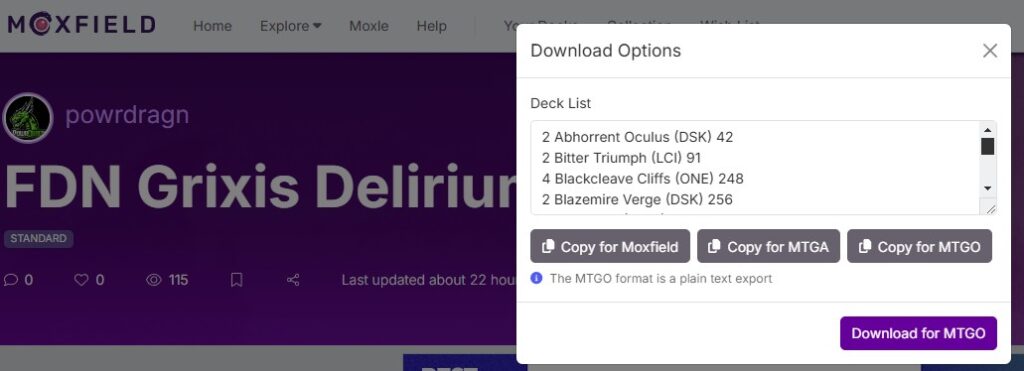
Once you do that, go to Arena and the Decks tab, where you’ll see the import icon ready to push and bring the list to your decks collection.

Unless you happen to already have all the cards you need in your collection, the new deck will be found at the bottom of the decks, with a lotus bloom icon over the deck to indicate you’ll need to use some wildcards to finish the deck. For this deck I’ll need two uncommon, seven rare, and two mythic wildcards. If you hover over the lotus bloom icon at the top of your Arena screen, you can see how many wildcards you have available to spend.
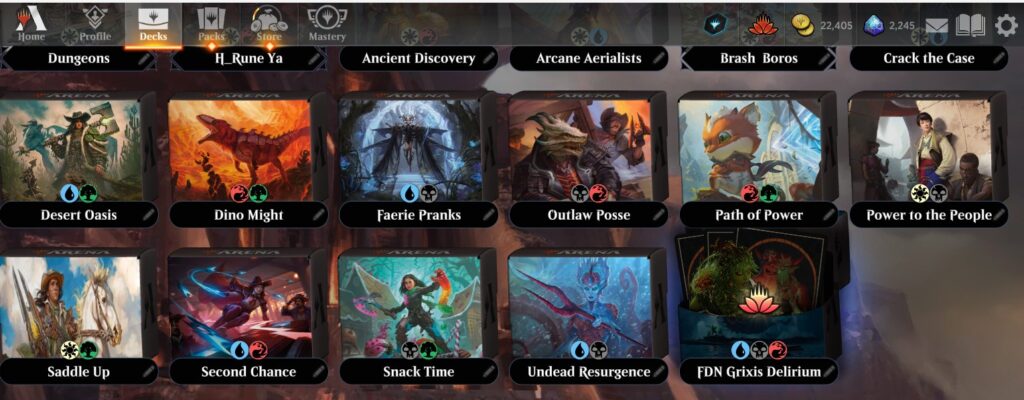
If you don’t have enough wildcards to craft the deck, but you really want to play it and don’t want to wait until you accumulate more wildcards, the Arena store lets you purchase rare and mythic wildcards that might finish up your sweet deck.
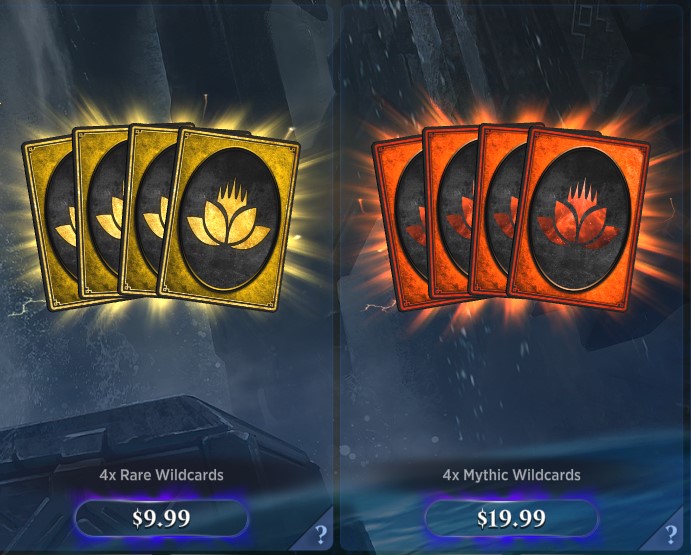
4. Choose a Deck With Powerful, Newer Cards
If you need to spend rare and mythic rare wildcards, make sure it’s on powerful cards that can go in multiple decks. And try to choose newer cards that you’ll get to play with for a longer time before they rotate out. Crafting rares and mythics from Foundations is particularly good value since the set will remain Standard-legal for longer than the other card sets.
If you enjoy large creatures that are difficult to deal with, Sire of Seven Deaths makes an excellent choice. It can be played either in a green-based ramp deck, or a reanimator deck that brings it back to the graveyard for a lot less than the seven mana it takes to cast. If you lean towards control decks, you can’t go wrong crafting Day of Judgment as a way to sweep away a bunch of creatures from the battlefield. And you can benefit from crafting rare lands like Temple of Mystery, which will find their way into all sorts of decks.
Keep an eye out for the pack bundle deals that come out in the weeks before the release of a new set. Below you’ll see the Chandra Pack Bundle for Aetherdrift. For $49.99 USD you get fifty packs of the new set, plus five “Golden Packs,” the Chandra, Spark Hunter card, and some cosmetics. That’s less than a dollar per pack, and will give you a good start on the new cards you might need for upcoming Standard, and all those packs you open will also give you a decent number of rare and mythic wildcards.
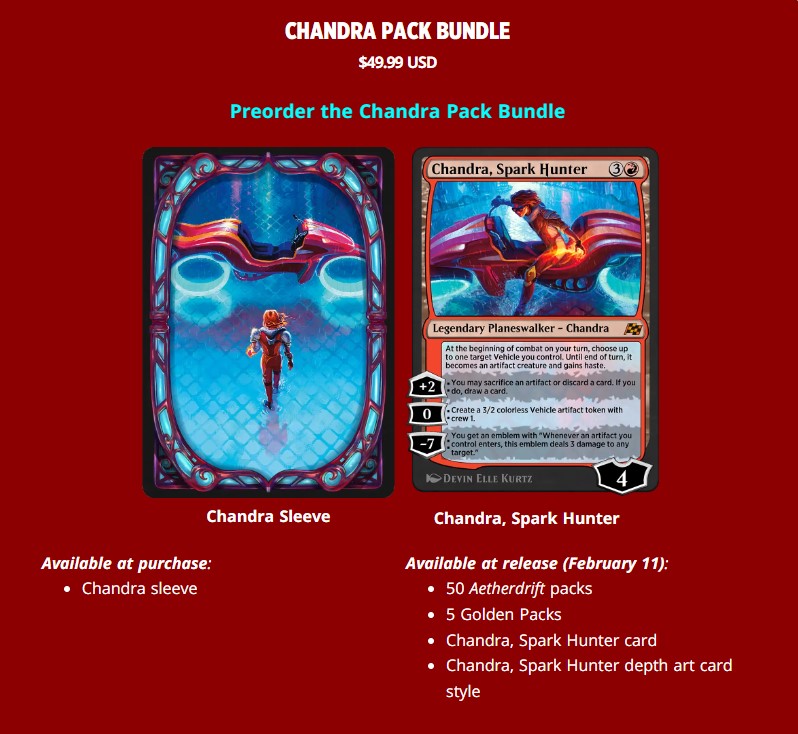
5. Practice Makes Perfect
If you have the time, you can always run your deck through the paces in the unranked play queue, where no matter if you win or lose you it won’t impact your rank on the ladder.
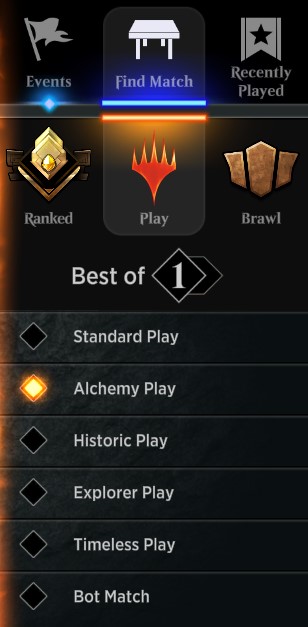
Even though it’s not ranked, there are plenty of people playing real decks here that will give you a good taste of what you’ll face on the ladder. Each time you play your deck you’ll get better and better, and once you feel comfortable enough, hop into the ranked queue and start your climb!
Another option is to give yourself a palette cleanse and play a Draft, Sealed, or Brawl game. Playing a different format will still improve your Magic chops, and you might even run across a new trick you can bring back to your Standard adventures.
I hope these tips help you start your climb up the competitive Arena ladder, but most of all remember to have fun!
Looking for great decks to climb the Standard ladder with? Then check out our guides for Golgari Midrange and Azorius Oculus.
